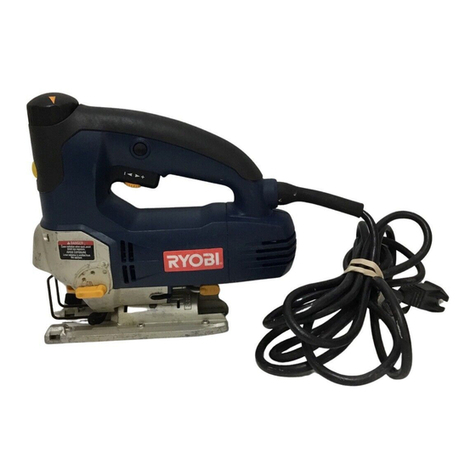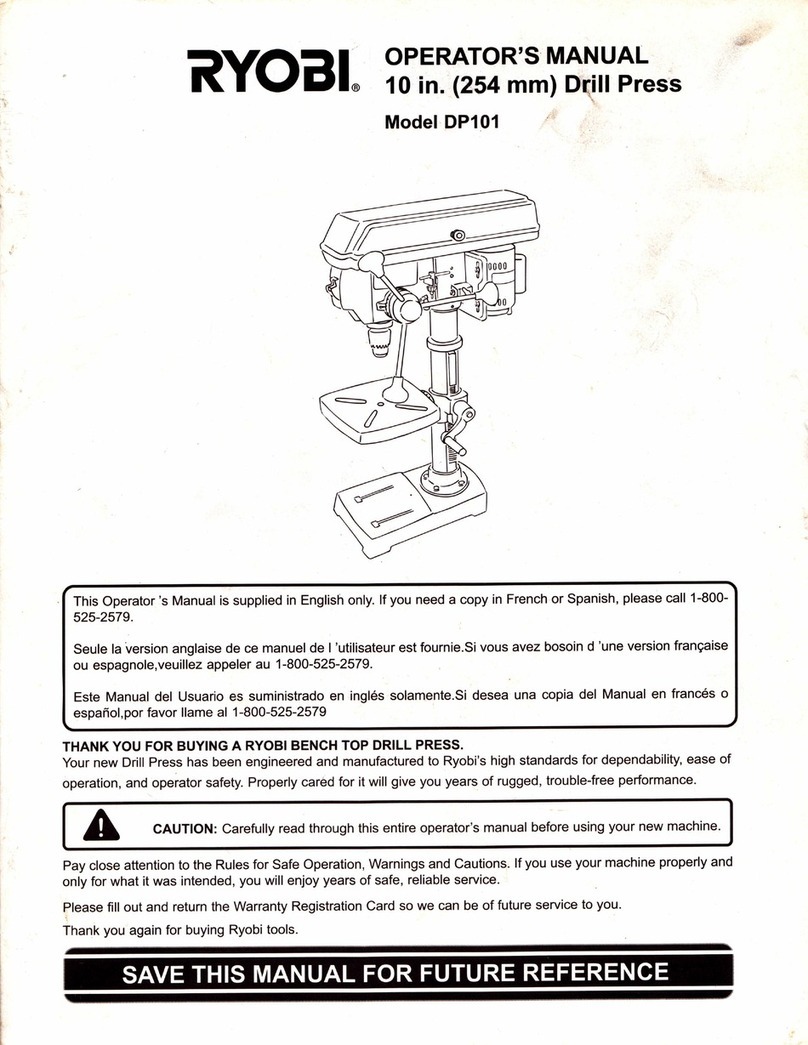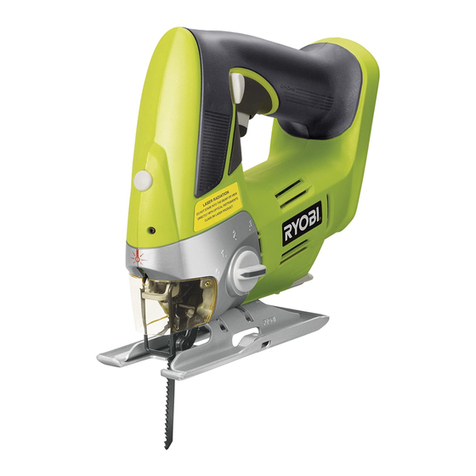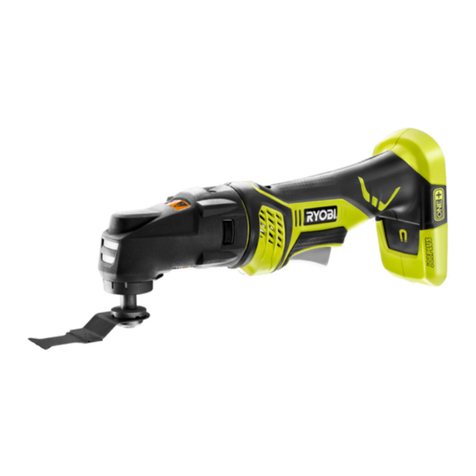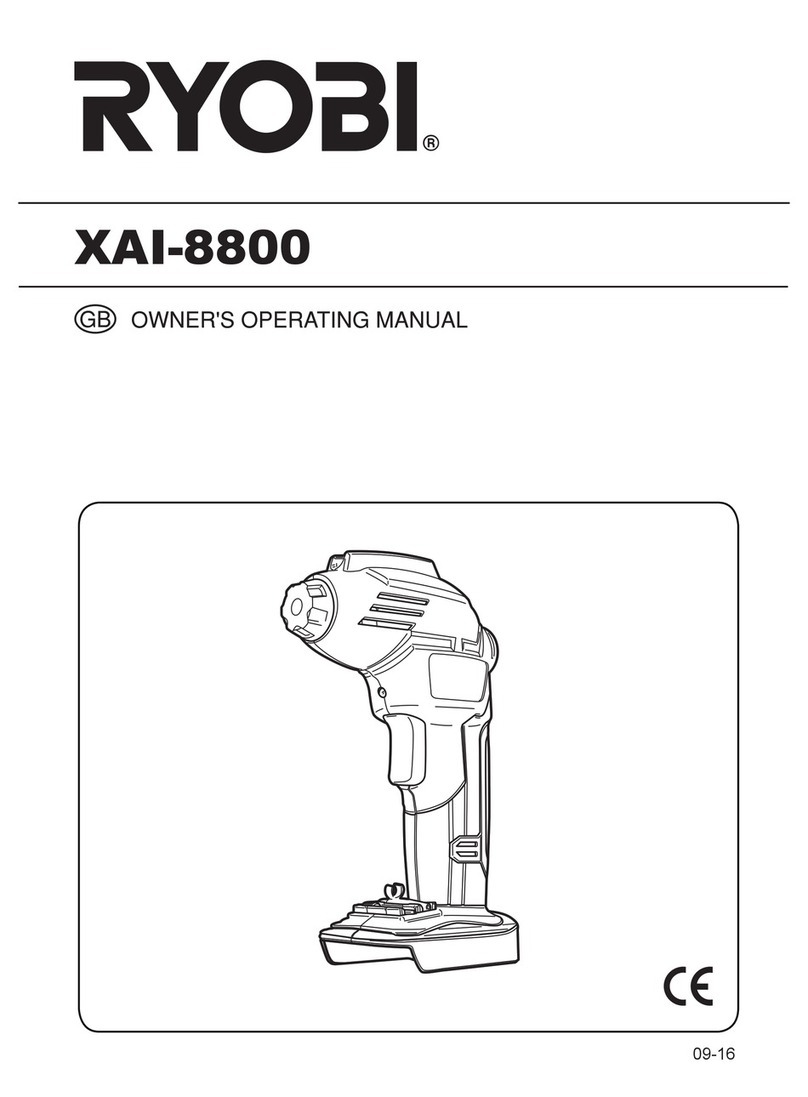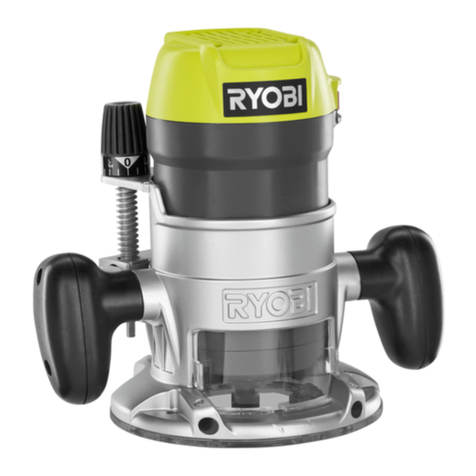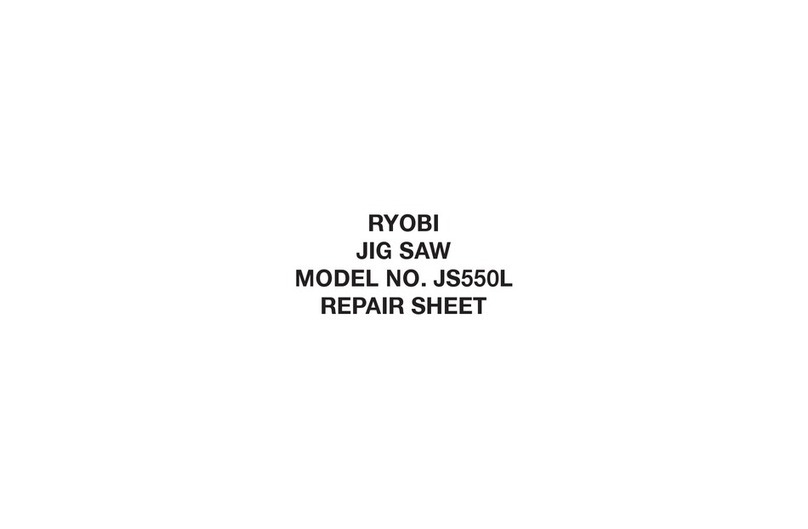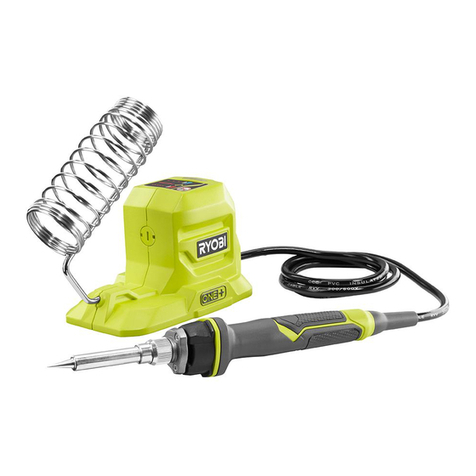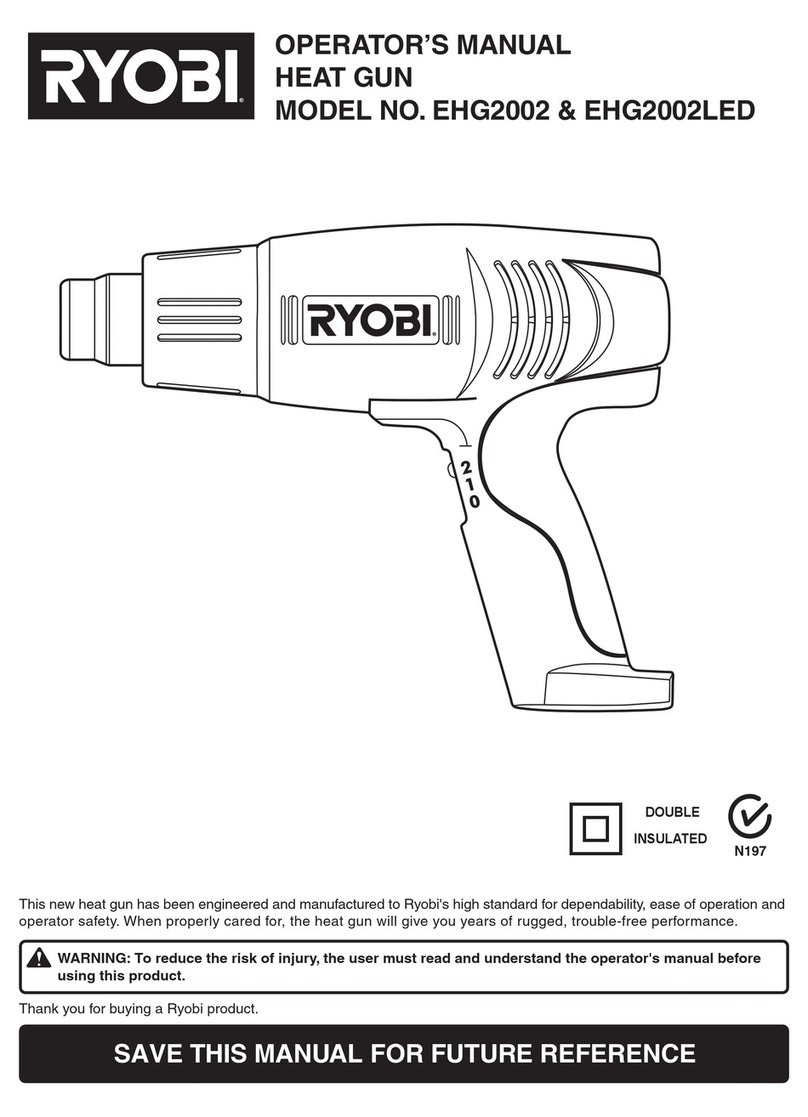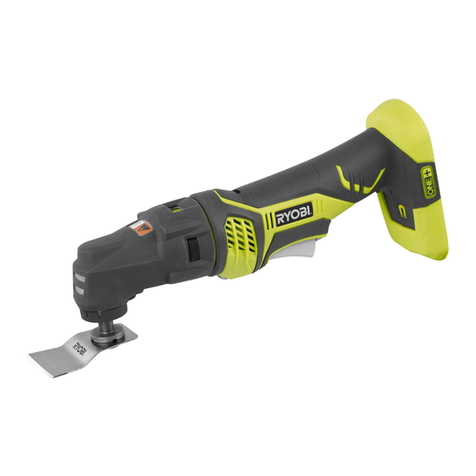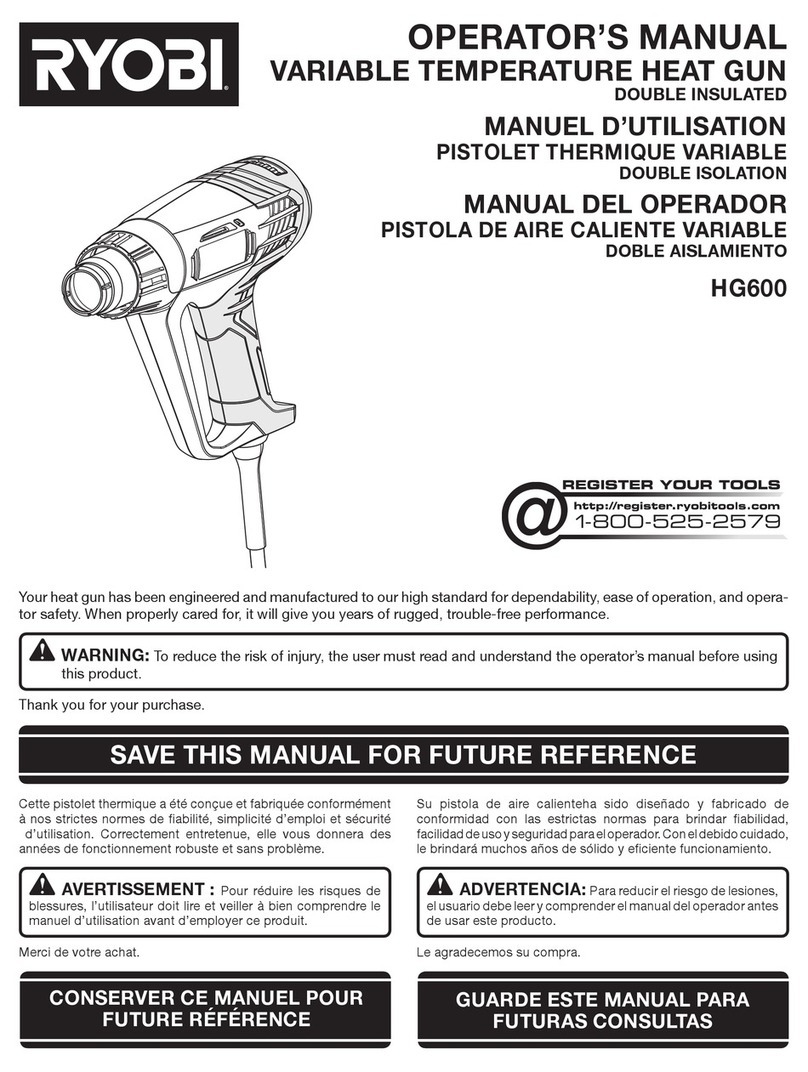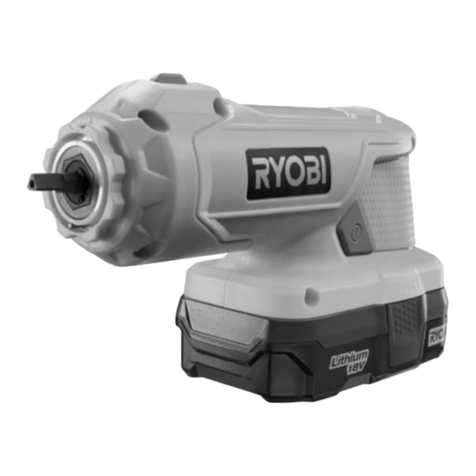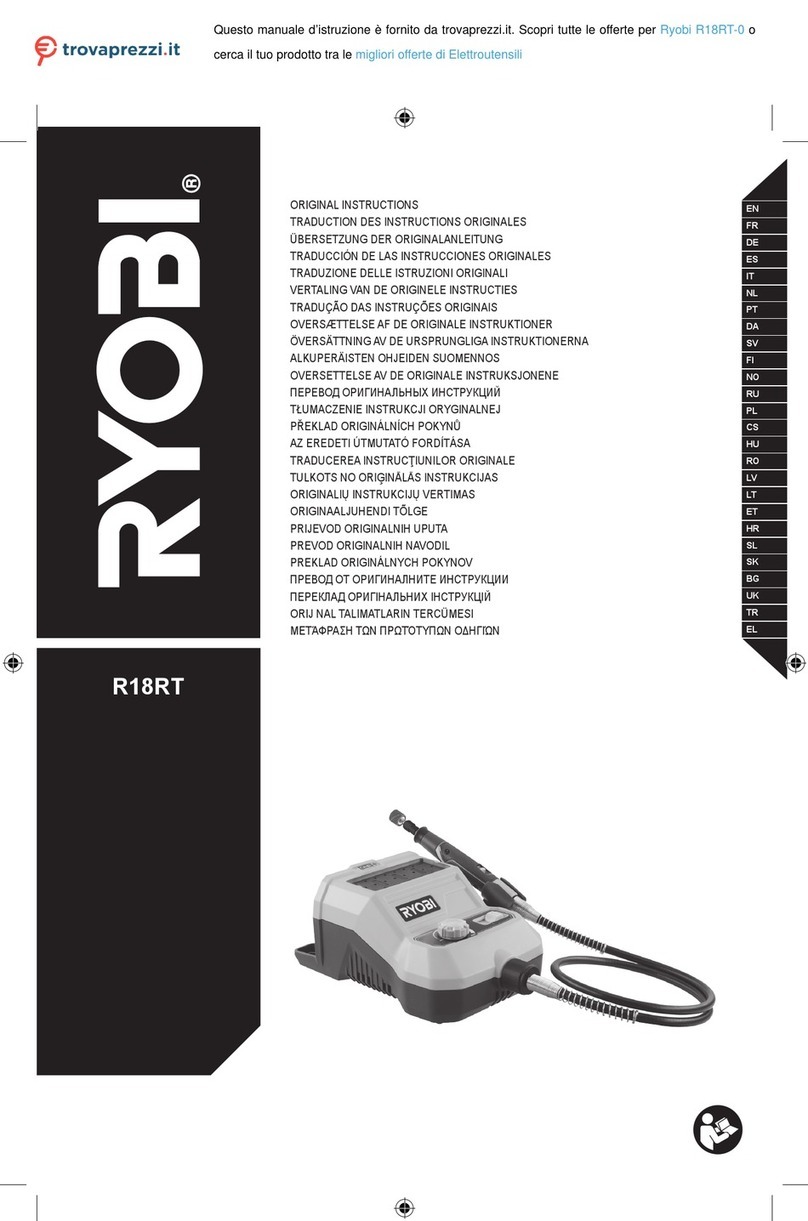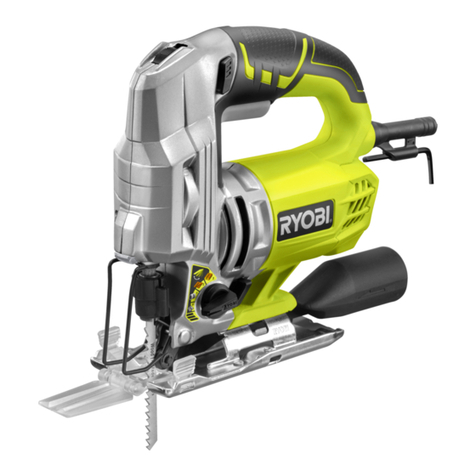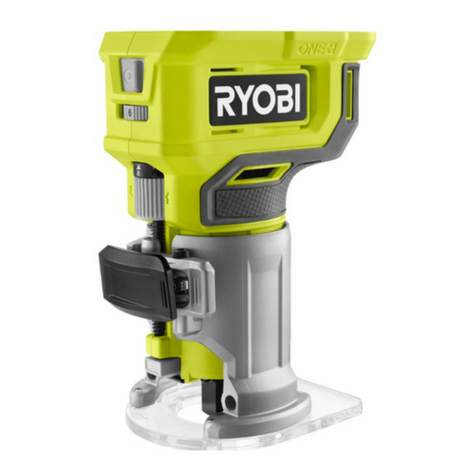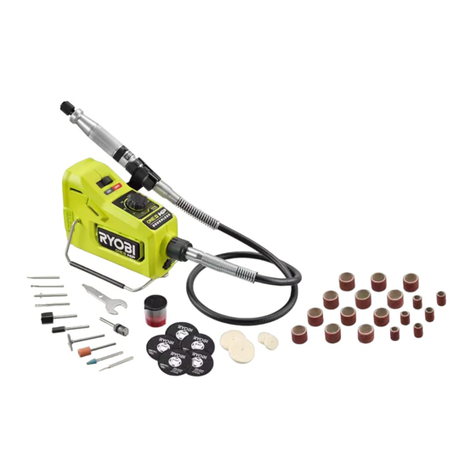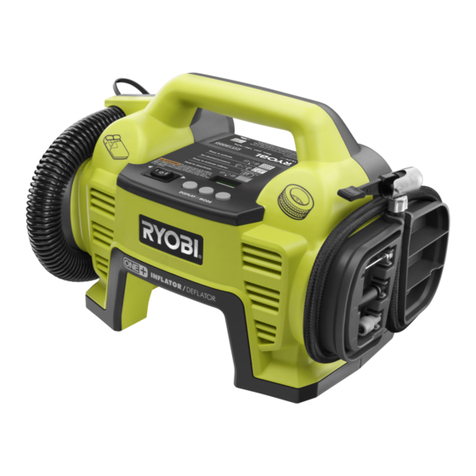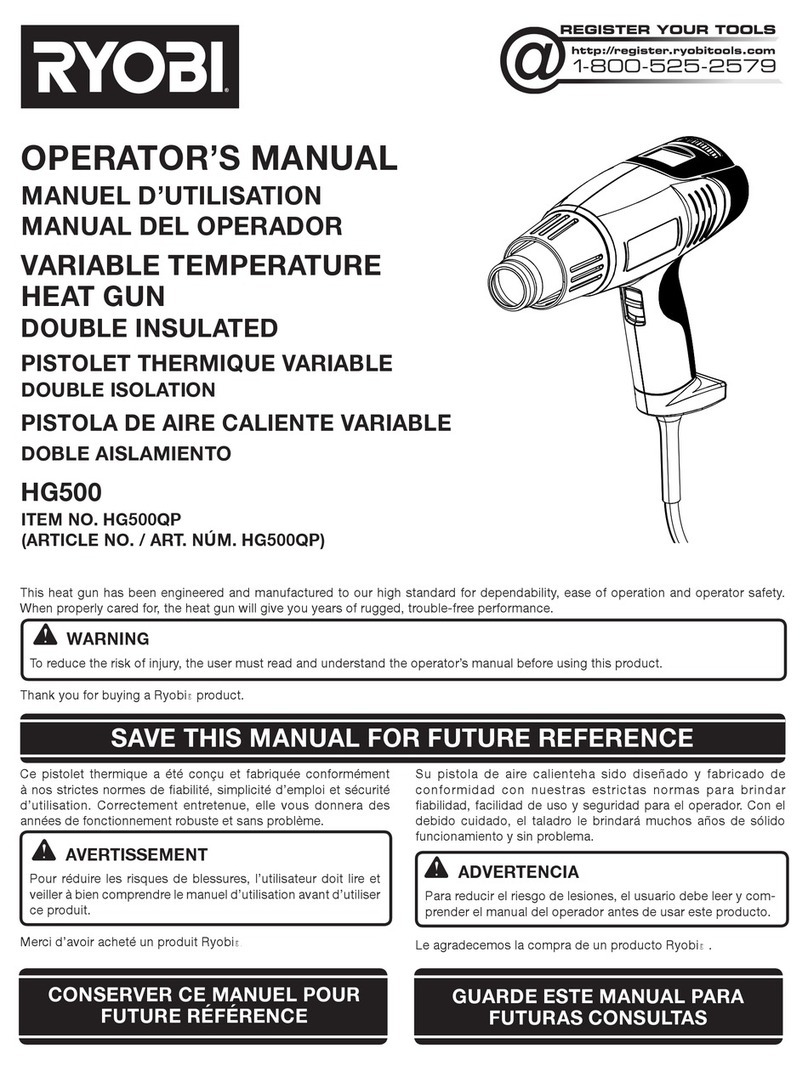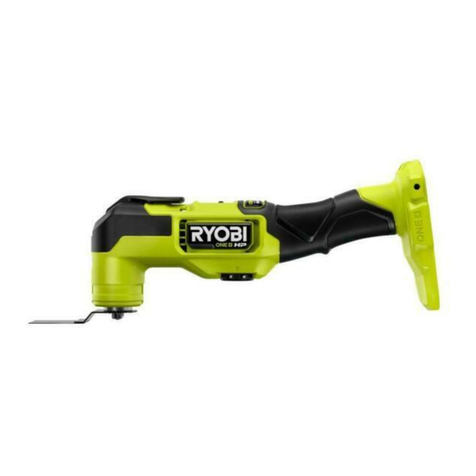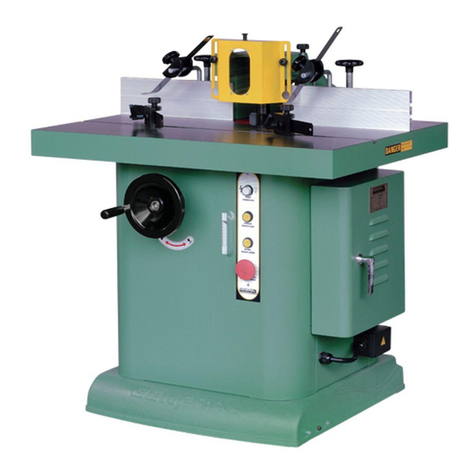
1
Safety, performance, and dependability have been given
top priority in the design of your soldering iron.
INTENDED USE
The soldering iron is only intended for soldering circuits,
electrical connections, jewellery, stained glass, and other
crafts.
Do not use the product for any other purposes.
SOLDERING IRON SAFETY WARNINGS
■Save these instructions. Refer to them frequently and
use them to instruct others who may use this tool. If you
loan someone this tool, loan them these instructions
also.
■Keep work area clean and well lit. Cluttered or dark
areas invite accidents.
■Do not operate the product in explosive
atmospheres, such as in the presence of flammable
liquids, gases, or dust. Battery products create sparks
which may ignite the dust or fumes.
■Keep children and bystanders away while operating
the product. Distractions can cause you to lose control.
■The product is intended for household use only.
■The soldering iron must be placed in the holder when
not in use.
■Do not lay a hot soldering iron on its side.
■Do not touch the heated tip of the soldering iron.
■Always assume that the soldering iron tip is hot.
■Use the soldering iron in a well-ventilated area to avoid
breathing fumes.
■Do not point the tip of the soldering iron at another
person.
■Do not place your hands or fingers near the tip of the
soldering iron.
■Never leave the product unattended while it is switched
on.
■Always remove the battery pack and allow the soldering
tip to cool for a minimum of 30 minutes before removing
the tip. Touching a hot soldering tip can result in serious
personal injury.
■Always remove the battery pack and allow the product
to cool before leaving, transporting or storing. Storing
a soldering iron with a hot tip can cause serious burns
and/or ignite combustible objects.
■Remove the battery pack from the product and
ensure the unit has cooled down before making any
adjustments changing accessories, or storing the
product. Such preventive safety measures reduce the
risk of starting the product accidentally..
■Do not allow children to use the soldering iron. It is not
a toy.
■Do not solder live circuits.
■Do not disassemble the product.
■The soldering iron tip is sharp. Do not touch the tip
or allow it to come in contact with anything other than
soldering wire and the workpiece material.
■Do not expose battery products to rain or wet conditions.
Water entering a battery product will increase the risk
of electric shock.
■Use the product only for its intended use as described
in this manual.
■If the product is not working properly, has been
dropped, damaged, left outdoors or dropped into water,
return to your nearest service centre.
■Do not handle the product or charger with wet hands.
BATTERY AND CHARGER SAFETY WARNINGS
■Connect and disconnect the battery pack properly.
●To install battery pack:
–Place the battery pack on the product.
–Make sure the latches on each side of the
battery pack snap into place and the battery
pack is secured on the product before beginning
operation.
●To remove battery pack:
–Depress the latches on the side of the battery
pack.
–Remove the battery pack from the product.
■Remove battery when the product is not in use and
before servicing.
■Do not place batteries near fire or heat. They may
explode.
■Rechargeable batteries are to be removed from the
product before being charged.
■Different types of batteries or new and used batteries
are not to be mixed.
■Batteries are to be inserted with the correct polarity.
■Exhausted batteries are to be removed from the product
and safely disposed of.
■If the product is to be stored unused for a long period,
the batteries should be removed.
■The supply terminals are not to be short-circuited.
■Under extreme usage or temperature conditions,
battery leakage may occur. If liquid comes in contact
with skin, wash at least 10 minutes then seek immediate
medical attention.
■Batteries vent hydrogen gas and can explode in the
presence of a source of ignition, such as a pilot light.
To reduce the risk of serious personal in jury, never use
any cordless product in the presence of an open flame.
An exploded battery can propel debris and chemicals. If
exposed, flush with water immediately.
■Electric shock could occur if the battery is charged
outdoors or on wet surfaces.
■Do not expose charger to wet or damp conditions.
■Use of an attachment not recommended or sold by the
battery charger manufacturer may result in a risk of fire,
electric shock, or injuries to person.
■To reduce risk of damage to charger body and cord, pull
by charger plug rather than cord when disconnecting
charger.
■Make sure cord is located so that it will not be stepped
on, tripped over, or otherwise subjected to damage and
stress.
■An extension cord should not be used unless absolutely
